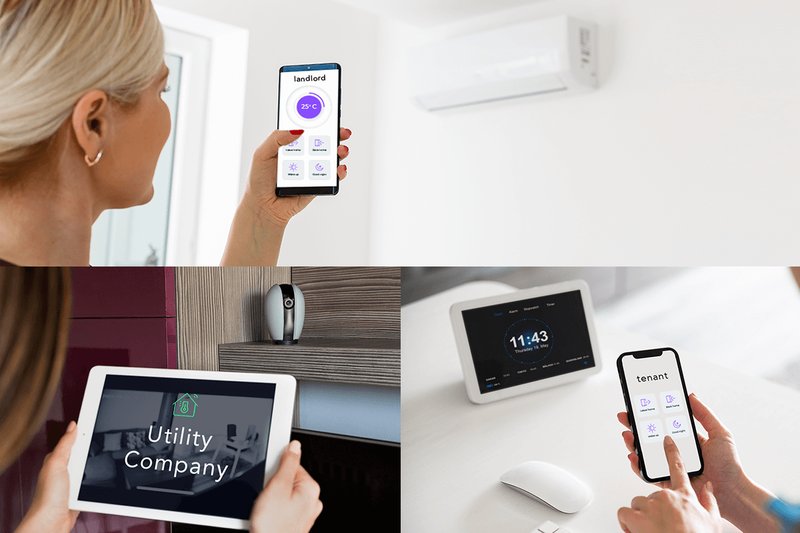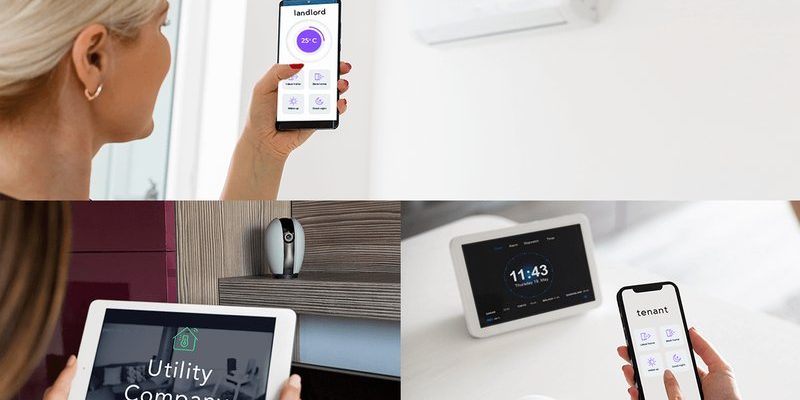
Imagine you just moved into a new apartment, and the landlord has already installed some high-tech Nest smart home devices—like thermostats, security cameras, or doorbells. It’s almost like stepping into the future, but then you hit a snag: can you actually register and manage those devices under your own account? It’s a bit like walking into someone else’s digital home and wondering if you can change the furniture or rearrange the tech without breaking something.
Here’s the thing—smart home devices like Nest aren’t just gadgets you plug in and forget. Behind the scenes, they’re tied to accounts, permissions, and security protocols. So when the landlord buys and sets up these devices, they’re usually registered to *their* Google account. That raises a tricky question: if you’re a tenant, can you take control of those devices by registering them yourself? Let me explain how this works, what the limitations are, and what you can do to make your Nest experience hassle-free.
How Nest Device Registration Works
To get why tenants can or can’t register Nest devices purchased by a landlord, it helps to understand the basics of Nest registration. When a Nest device is set up for the first time, it’s linked to a Google or Nest account. This connection controls who can access device features, receive notifications, and adjust settings remotely. Think of the account as the “master key” to the device.
Once registered, the device’s ownership and management live in that specific account. Other users can be added with permissions, but the primary account holder keeps ultimate control. This system helps with security—it stops unauthorized people from taking over your smart home devices just by being physically near them. So when a landlord buys and sets up a Nest thermostat in an apartment, it’s tied to *their* account, not the tenant’s.
This means if you’re a tenant moving in, you don’t automatically get the power to register or manage those devices under your own Google account. You’d basically be locked out from making big changes unless the landlord shares access or transfers ownership.
Why Tenants Usually Can’t Register Nest Devices Themselves
You might be wondering, “Why can’t I just reset the device and register it as mine?” Unfortunately, Nest smart devices have security features that prevent unauthorized resets from switching accounts easily. Even hitting the factory reset button doesn’t always mean you can just pair it with your own account afterward.
Here’s the thing: Google’s system is designed with anti-theft in mind. When a device is activated and linked to a particular account, factory resetting it doesn’t erase that “ownership lock.” It still remembers the original registration, and it will require the original account credentials to fully transfer ownership.
So if a tenant tries to reset and register the device themselves without the landlord’s cooperation, they’ll likely run into a message saying the device is still linked to another account. This is a built-in security measure to prevent devices from being stolen and re-registered by unauthorized users.
How Can Tenants Gain Access to Nest Devices?
Honestly, the best way for tenants to manage Nest devices installed by landlords is to work together. The landlord, as the primary account holder, can add the tenant as a shared user through the Nest app. This way, tenants get permission to control the devices without having to register them fully.
Shared access usually includes things like adjusting temperature, viewing camera feeds, or receiving alerts. However, the landlord still holds the ultimate control, like removing devices or changing account settings. This setup is a bit like being given a spare key instead of the master key—enough to make significant adjustments but not to change ownership.
If the landlord is open to it, they can transfer full ownership of the Nest devices to the tenant’s Google account. This involves removing the devices from their account and having the tenant register them freshly. However, this process requires the landlord’s active participation and trust.
Step-by-Step: What to Do if You’re a Tenant Wanting Control
Here’s a simple approach tenants can take if they want to manage Nest devices installed by the landlord:
- Talk to your landlord about your interest in controlling the devices. Explain why it matters for your comfort or security.
- Ask to be added as a shared user through the Nest app. This is the easiest way to get access without any complicated resets.
- If you want full ownership, request the landlord to remove the devices from their account and let you register them yourself.
- Follow the Nest app instructions to add devices once ownership is transferred or shared access is granted.
Remember, without the landlord’s cooperation, it’s almost impossible to fully register those devices under your own account, thanks to Google’s security design.
Common Troubleshooting Issues Tenants Face
Sometimes tenants get stuck trying to reset or pair Nest devices without success. Here are some common problems:
- “Device already linked” messages: This means the device is still registered to the landlord’s account, and a factory reset alone doesn’t fix it.
- Difficulty in syncing devices: Without ownership or shared access, the Nest app won’t let you manage settings or view live feeds.
- Battery or connectivity problems: Smart devices need consistent Wi-Fi and power. Troubleshooting these can be confusing if you don’t have full access.
If you hit these roadblocks, the fastest solution is to get your landlord involved. Sometimes a quick account sync or removal can solve the problem.
What if You’re Using Universal Remotes or Other Smart Systems?
Nest devices aren’t just smart thermostats—they’re connected parts of a whole ecosystem. Some tenants try to patch their control through universal remotes or third-party smart hubs. While this can work for some functions, it won’t replace the need for proper account registration and sync.
Universal remotes and smart hubs typically rely on the original device being accessible and registered. So if you can’t get access through the Nest account, these tools won’t magically give you control over core device functions. Plus, integrating multiple systems can get tricky and lead to troubleshooting headaches.
Why This Matters: Security, Privacy, and Convenience
At the end of the day, the reason Google and Nest set up such strict account controls is to protect your security and privacy. Imagine if just anyone could grab your neighbor’s smart camera, reset it, and spy through it. That’s a no-go.
For tenants, this means a bit of patience and communication with landlords. If managed well, it can be a win-win: landlords keep security intact, and tenants get user-friendly access through shared controls or ownership transfers.
“Smart homes are great, but they only work well when ownership and access are clear and cooperative.”
So, if you’re a tenant eyeing those Nest devices your landlord installed, remember: registering them yourself isn’t straightforward. But with a good chat and some teamwork, you can make the smart home truly yours—at least while you live there.
Wrapping It Up: Making Nest Work in Rental Homes
To sum it up without sounding too “summary-y,” tenants usually can’t directly register Nest smart home devices purchased and set up by landlords, because these devices are locked to the landlord’s account for security reasons. Factory resets won’t bypass that lock, and full control requires the landlord’s cooperation—either by sharing access or handing over ownership.
It might not be the most glamorous part of smart home setups, but it’s all about keeping your living space safe and secure. So next time you move in and find those Nest gadgets waiting, think of them as high-tech house guests who need their original host to introduce you properly before you can be the ultimate manager.
